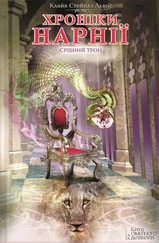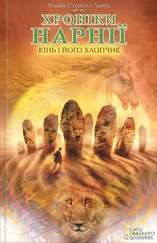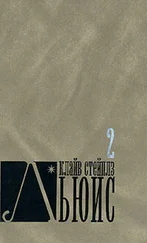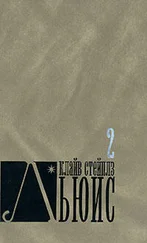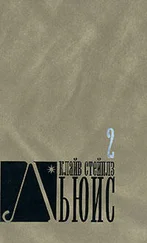There are several points here that deserve attention. Firstly that the internal sensation accompanying intense aesthetic delight was indistinguishable from the sensation accompanying two other experiences, that of being in love and that of being, say, in a rough channel crossing. (2) That of these two other experiences one at least is the very reverse of pleasurable. No man enjoys nausea. (3) That Pepys was, nevertheless, anxious to have again the experience whose sensational accompaniment was identical with the very unpleasant accompaniments of sickness. That was why he decided to take up wind music.
Now it may be true that not many of us have fully shared Pepys's experience; but we have all experienced that sort of thing. For myself I find that if, during a moment of intense aesthetic rapture, one tries to turn round and catch by introspection what one is actually feeling, one can never lay one's hand on anything but a physical sensation. In my case it is a kind of kick or flutter in the diaphragm. Perhaps that is all Pepys meant by "really sick". But the important point is this: I find that this kick or flutter is exactly the same sensation which, in me, accompanies great and sudden anguish. Introspection can discover no difference at all between my neural response to very bad news and my neural response to the overture of The Magic Flute . If I were to judge simply by sensations I should come to the absurd conclusion that joy and anguish are the same thing, that what I most dread is the same with what I most desire. Introspection discovers nothing more or different in the one than in the other. And I expect that most of you, if you are in the habit of noticing such things, will report more or less the same.
Now let us take a step further. These sensations—Pepys's sickness and my flutter in the diaphragm—do not merely accompany very different experiences as an irrelevant or neutral addition. We may be quite sure that Pepys hated that sensation when it came in real sickness: and we know from his own words that he liked it when it came with wind music, for he took measures to make as sure as possible of getting it again. And I likewise love this internal flutter in one context and call it a pleasure and hate it in another and call it misery. It is not a mere sign of joy and anguish: it becomes what it signifies. When the joy thus flows over into the nerves that overflow is its consummation: when the anguish thus flows over that physical symptom is the crowning horror. The very same thing which makes the sweetest drop of all in the sweet cup also makes the bitterest drop in the bitter.
And here, I suggest, we have found what we are looking for. I take our emotional life to be "higher" than the life of our sensations—not, of course, morally higher, but richer, more varied, more subtle. And this is a higher level which nearly all of us know. And I believe that if anyone watches carefully the relation between his emotions and his sensations he will discover the following facts; (1) that the nerves do respond, and in a sense most adequately and exquisitely, to the emotions; (2) that their resources are far more limited, the possible variations of sense far fewer, than those of emotion; (3) and that the senses compensate for this by using the same sensation to express more than one emotion—even, as we have seen, to express opposite emotions.
Where we tend to go wrong is in assuming that if there is to be a correspondence between two systems it must be a one for one correspondence—that A in the one system must be represented by a in the other, and so on. But the correspondence between emotion and sensation turns out not to be of that sort. And there never could be correspondence of that sort where the one system was really richer than the other. If the richer system is to be represented in the poorer at all, this can only be by giving each element in the poorer system more than one meaning. The transposition of the richer into the poorer must, so to speak, be algebraical, not arithmetical. If you are to translate from a language which has a large vocabulary into a language that has a small vocabulary, then you must be allowed to use several words in more than one sense. If you are to write a language with twenty–two vowel sounds in an alphabet with only five vowel characters then you must be allowed to give each of those five characters more than one value. If you are making a piano version of a piece originally scored for an orchestra, then the same piano notes which represent flutes in one passage must also represent violins in another.
As the examples show we are all quite familiar with this kind of transposition or adaptation from a richer to a poorer medium. The most familiar example of all is the art of drawing. The problem here is to represent a three–dimensional world on a flat sheet of paper. The solution is perspective, and perspective means that we must give more than one value to a two–dimensional shape. Thus in a drawing of a cube we use an acute angle to represent what is a right angle in the real world. But elsewhere an acute angle on the paper may represent what was already an acute angle in the real world: for example, the point of a spear on the gable of a house. The very same shape which you must draw to give the illusion of a straight road receding from the spectator is also the shape you draw for a dunces' cap. As with the lines, so with the shading. Your brightest light in the picture is, in literal fact, only plain white paper: and this must do for the sun, or a lake in evening light, or snow, or human flesh.
I now make two comments on the instances of Transposition which are already before us:
(1) It is clear that in each case what is happening in the lower medium can be understood only if we know the higher medium. The instance where this knowledge is most commonly lacking is the musical one. The piano version means one thing to the musician who knows the original orchestral score and another thing to the man who hears it simply as a piano piece. But the second man would be at an even greater disadvantage if he had never heard any instrument but a piano and even doubted the existence of other instruments. Even more, we understand pictures only because we know and inhabit the three–dimensional world. If we can imagine a creature who perceived only two dimensions and yet could somehow be aware of the lines as he crawled over them on the paper, we shall easily see how impossible it would be for him to understand. At first he might be prepared to accept on authority our assurance that there was a world in three dimensions. But when we pointed to the lines on the paper and tried to explain, say, that "This is a road," would he not reply that the shape which we were asking him to accept as a revelation of our mysterious other world was the very same shape which, on our own showing, elsewhere meant nothing but a triangle. And soon, I think, he would say, "You keep on telling me of this other world and its unimaginable shapes which you call solid. But isn't it very suspicious that all the shapes which you offer me as images or reflections of the solid ones turn out on inspection to be simply the old two–dimensional shapes of my own world as I have always known it? Is it not obvious that your vaunted other world, so far from being the archetype, is a dream which borrows all its elements from this one?"
(2) It is of some importance to notice that the word symbolism is not adequate in all cases to cover the relation between the higher medium and its transposition in the lower. It covers some cases perfectly, but not others. Thus the relation between speech and writing is one of symbolism. The written characters exist solely for the eye, the spoken words solely for the ear. There is complete discontinuity between them. They are not like one another, nor does the one cause the other to be. The one is simply a sign of the other and signifies it by a convention. But a picture is not related to the visible world in just that way. Pictures are part of the visible world themselves and represent it only by being part of it. Their visibility has the same source as its. The suns and lamps in pictures seem to shine only because real suns or lamps shine on them: that is, they seem to shine a great deal because they really shine a little in reflecting their archetypes. The sunlight in a picture is therefore not related to real sunlight simply as written words are to spoken. It is a sign, but also something more than a sign: and only a sign because it is also more than a sign, because in it the thing signified is really in a certain mode present. If I had to name the relation I should call it not symbolical but sacramental. But in the case we started from—that of emotion and sensation—we are even further beyond mere symbolism. For there, as we have seen, the very same sensation does not merely accompany, nor merely signify, diverse and opposite emotions, but becomes part of them. The emotion descends bodily, as it were, into the sensation and digests, transforms, transubstantiates it, so that the same thrill along the nerves is delight or is agony.
Читать дальше

